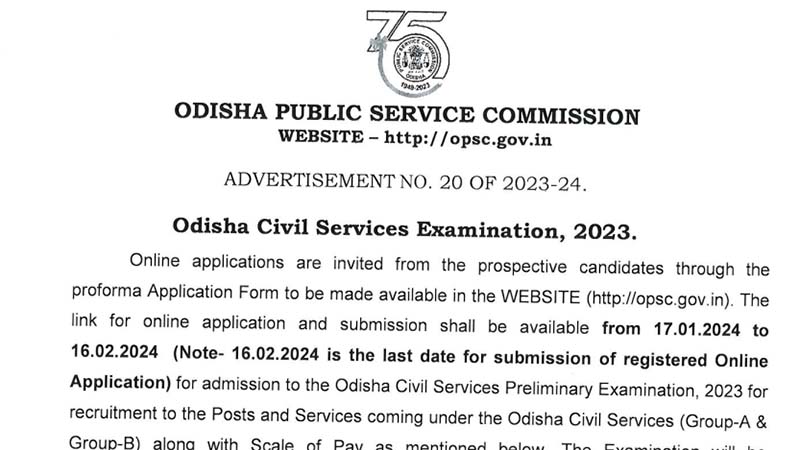Paper-1
Section-A
(i) General Geology and Geotectonics: The Solar System. Meteorites. Origin and interior of the earth. Radioactivity and age of earth. Volcanoes – causes and products, volcanic belts. Earthquakes-causes, effects, earthquake belts, Seismicity of India, intensity and magnitude, seismogram and seismographs. Island arc. Mid-oceanic ridges. Continental drift. Seafloor spreading. Plate tectonics. Orogeny and epeirogeny.
(ii) Geomorphology and Remote Sensing: Basic concepts of geomorphology. Weathering and mass wasting. Landforms, slopes and drainage. Geomorphic cycles and their interpretation. Morphology and its relation to structures and lithology. Applications of geomorphology in mineral prospecting, civil engineering,. hydrology and environmental studies. Geomorphology of Indian subcontinent. Aerial photographs and their interpretation – merits and limitations. The Electromagnetic Spectrum. Orbiting Satellites and sensor systems. Indian remote sensing satellites. Satellites data products. Applications of remote sensing in geology. The Geographic Information system and its applications.
(iii) Structural geology: Priniples of geologic mapping and map reading. Study of Toposheets. Stress and strain ellipsoid and stress-strain relationships of elastic, plastic and viscous materials. Behaviour of minerals and rocks under deformation conditions. Folds and faultsclassification and mechanics. Foliations, lineations, joints and unconformities. Superposed deformation. Primary sedimentary structures and their application. Introduction to petrofabrics.
Section-B
(iv) Paleontology: Species- definition and nomenclature. Megafossils and Microfossils. Modes of preservation of fossils. Different kinds of microfossils. Application of microfossils in correlation, Petroleum exploration, paleoclimatic and paleoceanographic studies. Morphology, geological history and evolutionary trend in Cephalopoda, Trilobita, Brachiopoda, Echinoidea and Anthozoa. Stratigraphic utility of Ammonoidea, Trilobita and Graptoloidea. Evolutionary trend in Hominidae, Equidae and Proboscidae. Siwalik fauna. Gondwana flora and its importance.
(v) Stratigraphy and Geology of India: Standard Stratigraphic Time Scale. Principies of stratigraphic correlation. Code of stratighraphic nomenclature. Distribution and classification of Precambrian rocks of India. Study of Phanerozoic rocks of India with reference to lithology, fauna, flora and economic importance. Major boundary problems – Cambrian/Precambrian, Cretaceous/Tertiary. Physiographic and Tectonic division of India. Evolution of the Himalayas. Geology of Odisha.
(vi) Hydrogeology and Engineering Geology: Hydrologic cycle. Vertical distribution of subsurface water. Aquifer, Aquitard, Aquiclude, and Aquifuse. Classification of Aquifers. Hydrologic properties of water bearing formation – Porosity, Permeability, Transmissivity and Storage Coefficient. Ground water provinces of India. Ground water exploration. Quality of Ground Water. Salt water intrusion. Problems and management of ground water. Ground water recharge. Rain water harvesting. Engineering properties of rocks. Geological investigations for dams, tunnels and bridges. Building stone and road materials – properties and Indian distribution. Landslides-causes, prevention and rehabilitation. Earthquake-resistant structures.
Paper-II
Section-A
(i) Mineralogy: Classification of crystals into systems and classes. International system of crystallographic notation. Spherical and Stereographic Projection. X-ray crystallography. Twinning. Petrological microscope and accessories. Double refraction. Nicol prism. Optical properties of minerals – Pleochroism, Refractive index, Extinction and extinction angle, Interference colour, Dispersion. Classification of silicate structures. Occurrence, chemistry, Physical and optical characters of Feldspar, Silica, Pyroxene, Amphibole, Garnet, Olivine and Mica groups. Minerals of Carbonate and sulphide groups.
(ii) Igneous ad Metamorphic Petrology: Generation and crystallisation of magma. Crystallisation of albite-anorthite, diopside-albite-anorthite and diopside-wollastonite-silica systems. Reaction principle. Magmatic differentation and assimilation. Petrogenetic significance of the textures and structrues of igneous rocks. Petrography and petrogenesis of granite, syenite, diorite, basic and ultrabasic rocks, charnockite, anorthosite and alkaline rocks and Carbonatites. Deccan volcanic province. Types and agents of metamporphism. Metamporphic grades and zones. Phase rule. Facies of regional and contact metamorphism. ACF and AKF diagrams. Textures and structures of metamporphic rocks. Metamorphism of arenaceous, argillaceous and basic rocks. Retrograde metamorphism. Metasomatism and granitisation. Migmatites. Granulite terrains of India.
(iii) Sedimentology: Processes of formation of sedimentary rocks. Textures and structures of sedimentary rocks and their significance. Classification of sedimentary rocks. Heavy minerals and their significance. Sedimentary facies and provenance. Sedimentary environments-fluvial, glacial, lacustrine and marine. Sedimentary basins of India.
Section-B
(iv) Economic Geology: Ore minerals and gangue, tenor and grade. Classification of mineral deposits. Process of formation of minerals deposits. Controls of ore localisation. Metallogenic epochs and provinces. Geology of the important Indian deposits of aluminium, chromium, copper, gold, iron, lead zinc, manganese, titanium, uranium and thorium and industrial minerals. Deposits of coal and petroleum in India. National Mineral Policy. Conservation and utilization of mineral resources. Marine mineral resources and Law of Sea.
(v) Mining Geology: Methods of prospecting – geological, geophysical, geochemical and geobotanical. Techniques of sampling. Estimation of reserves of ore. Methods of exploration and mining of metallic ores, industrial minerals and marine mineral resources. Mineral beneficiation and ore dressing.
(vi) Geochemistry and Environmental Geology: Cosmic abundance of elements. Geochemical classification of elements. Structure and their compostion of earth and distribution of elements. Trace elements. Geochemical cycle. Elements of crystal chemistry-types of chemical bonds, coordination number. Isolmorphism and polymorphism. Natural hazards-floods, landslides, coastal erosion, earthquakes and volcanic activity and their mitigation. Environmental impact of urbanization, open cast mining, industrial and radioactive waste disposal, use of fertilizers, dumping of mine waste and fly-ash. Pollution of ground and surface water, marine pollution. Environment protection legislative measures in India.
